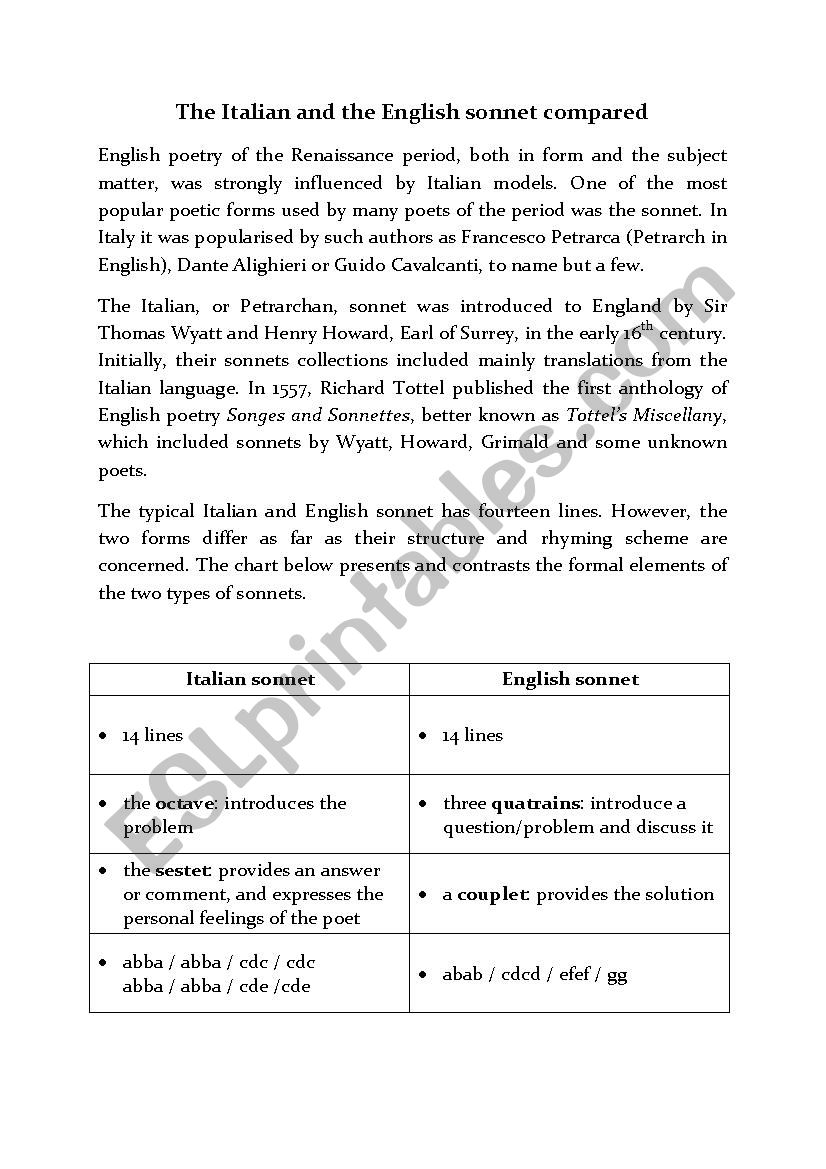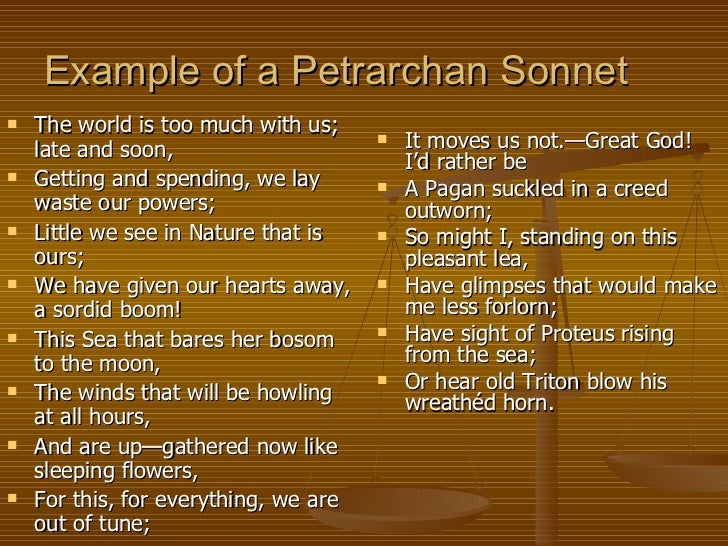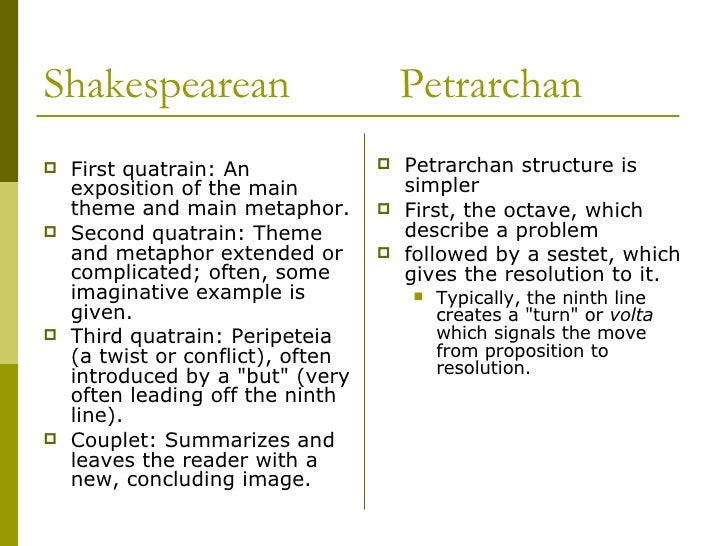
Yet knows its boughs more silent than before: Nor knows what birds have vanished one by one,
#Italian sonnet examples by students full#
Is full of ghosts tonight, that tap and sigh I have forgotten, and what arms have lain What lips my lips have kissed, and where, and why, Vincent Millay’s Italian sonnet, “What lips my lips have kissed, and where, and why.” Notice the rhyme pattern in the sestet and how the poet crafts her argument. The volta is of utmost importance, and, much like a thesis statement in an academic essay, you can use it to make sure you are on the right track when writing an Italian sonnet. This is where the shift from problem to solution happens. The ninth line – that is, the first line of the sestet – is commonly known as the volta, or turn. Then, in the conclusion, the speaker presents a solution to the problem, or an answer to the question. In an Italian sonnet’s octave, the speaker outlines a problem, question, or concern. Thus the Italian sonnet’s octave and sestet are also its problem and conclusion. The problem and conclusion form what is known as the poem’s argument. Poetic rules dictate that, in any rhyming poem, a change of rhyme pattern corresponds to a change in subject or tone. That is a convention used in English and Spenserian sonnets.

While the sestet’s rhyming scheme is flexible, an Italian sonnet never ends in a couplet.

CDCDCD, CDECDE, and CDECED are all common patterns found in Italian sonnets. Some sestets have three rhyming sounds while others have only two.

The sestet has six lines, and, unlike the octave, its rhyming pattern changes according to the whim of the writer. Italian sonnets consist of two parts: an octave and a sestet.Īs its name suggests, the octave consists of eight lines. Petrarch was the most well-known sonneteer during this period, to the extent that Italian sonnets are sometimes referred to as Petrarchan sonnets.** Parts of an Italian Sonnet: The Octave and the Sestet The Italian sonnet rose to prominence in the 13th and 14th century. Michelangelo used the form in his poetry, as did Divine Comedy author Dante Alighieri. And despite Shakespeare’s lasting influence on English literature, the Italian sonnet remained popular – perhaps even more popular – with English-speaking poets for centuries. Some may even – erroneously – believe the Bard created the sonnet form.* But sonnets have existed since the early Renaissance, centuries before Shakespeare’s time. When most people think of sonnets, only one name comes to mind: William Shakespeare. Over the next few weeks, we’ll examine three of the most famous sonnet types. The sonnet is one of the most famous poetic forms, almost as recognizable as the haiku.


 0 kommentar(er)
0 kommentar(er)
